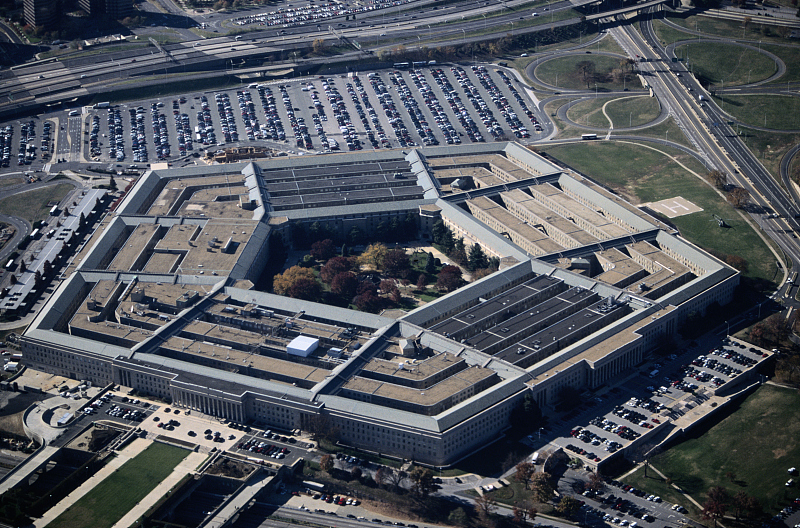
L-R: National flags of Australia, the UK and the U.S. /CFP
L-R: National flags of Australia, the UK and the U.S. /CFP
Editor's note: Hamzah Rifaat Hussain, a former visiting fellow at the Stimson Center in Washington and former assistant researcher at the Islamabad Policy Research Institute, is a TV anchor at Indus News in Pakistan. The article reflects the author's opinions and not necessarily those of CGTN.
It is now an established fact that militarization of any region, including the Asia Pacific, would jeopardize the international security environment as the crisis in Ukraine continues unabated. Yet the United States, the United Kingdom and Australia have introduced another nuclear component in their trilateral security pact, adding to its controversial reputation.
Announced in September last year, the AUKUS pact provided Australia, a champion of non-proliferation, access to nuclear powered submarines, violating basic principles of non-proliferation. This year, the introduction of hypersonic missiles reinforces the cold war mentality of states seeking to contain China. On all fronts, this development is a new low.
President Joe Biden and Prime Ministers Boris Johnson and Scott Morrison have cited bizarre rationales for launching the two-front containment strategy. Under the military agreement, Britain will work with the U.S. and Australia in developing nuclear capable hypersonic missiles in the Asia Pacific alongside existing cooperation centered on boosting cyber capabilities, developing quantum technologies and undersea capacity building.
The rationale for beefing up capabilities is to counter Russia's high-speed missiles that it used in airstrikes last month in Ukraine. Here lies an important contradiction. The enhancement of the AUKUS pact is purportedly targeted at Russia in another theater of conflict, but in reality, nuclear deterrence is being boosted as offensive posturing in the Indo-Pacific to counter China.
The decision to couple both countries indicates an alarming, dangerous and unwarranted threat which could easily escalate. Militarizing the region through enhanced nuclear capabilities also lacks strategic wisdom as the U.S. itself tested a hypersonic missile last month.
In light of these contradictions, it is worthwhile for respective leaderships to understand what hypersonic missiles actually entail given their regional and global implications. The South Asian deterrence equation, for example, was tested when an unarmed missile from India landed in Pakistan last month, heightening the risk of miscalculations among the two nuclear armed states. The missiles travel five times faster than both the speed of sound and cruise missiles, with great maneuverability allowing them to evade conventional missile defense systems.
Ironically, Stephen Lovegrove, UK's national security adviser, considered such enhancements as an example of allies seeking to defend democracy, international law and freedom of navigation. The truth is that the pernicious effects of introducing such missiles in the Asia Pacific is a brazen violation of nonproliferation norms and stimulates a reckless global arms race amid heightened tensions over Ukraine.
According to estimates from the Pentagon, the hypersonic missiles add $21.5 billion to the American naval budget, which runs contrary to concerns expressed by Campaign for Nuclear Disarmament (CND) General Secretary Kate Hudson, who warned that the extension of the AUKUS pact could escalate global tensions when the threat of a nuclear showdown is palpable.

The Pentagon in Arlington, Virginia, U.S. /CFP
The Pentagon in Arlington, Virginia, U.S. /CFP
Note that on Russia, AUKUS states have cited the Kinzhal hypersonic missile employed during the Ukrainian conflict as a justification for augmenting their scope, with Biden terming it as a weapon of significant concern. Yet U.S. Defense Secretary Lloyd Austin contradicted the president's claims by considering such missiles to be of little military value. Such glaring contradictions are surfacing in times when authentic information is becoming the first casualty of war in Ukraine, yet member states continue to prop up threats and justify nuclearization with incomplete information.
Hypersonic missiles as components of AUKUS are also more political in nature given that the merits of the justifications cited are questionable. This development comes at a time when Morrison is witnessing dwindling support of his electoral base against the Labor party in Australia, with federal elections just a month away.
By constantly citing the China threat and propping up the narrative of boosting nuclear deterrence, the Morrison administration is seeking to regain popular support in a country where widespread discontent over the government's handling of the economy and the pandemic has taken hold.
The truth is that nuclear bravado as offensive posturing for political gain in the Asia Pacific will simply weaken nonproliferation norms and heighten the risk of miscalculation. The recent introduction of hypersonic missiles now marks a new low for the AUKUS security pact which was controversial from the outset.
(If you want to contribute and have specific expertise, please contact us at opinions@cgtn.com. Follow @thouse_opinions on Twitter to discover the latest commentaries on CGTN Opinion Section.)

